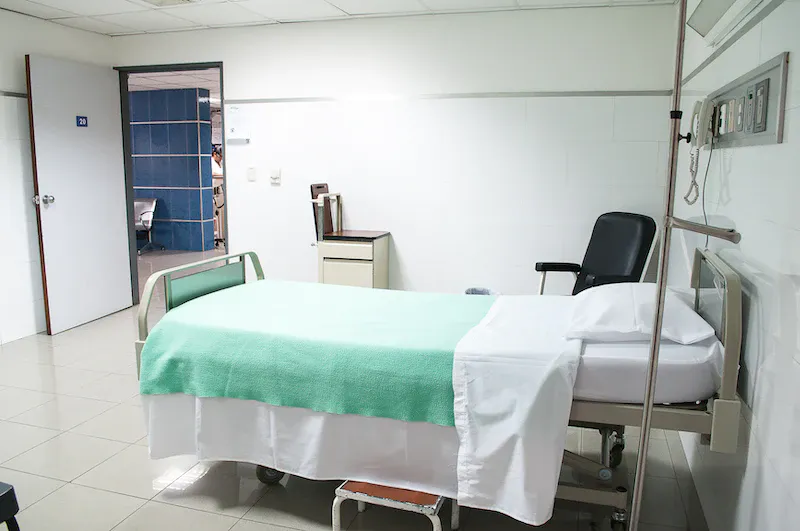Revealing the Myths and Realities of Female Sexuality: Enabling Women to Own Their Pleasure

The Misunderstanding of Female Sexuality: Why It Matters
Despite being a fundamental aspect of human life, sexuality is still a taboo topic in many cultures. This is especially true for female sexuality, which has been subject to centuries of misunderstanding, misrepresentation, and even mutilation. In her TED Talk, journalist and author Peggy Orenstein sheds light on the cultural and medical biases that have shaped our understanding of female sexuality, and why it matters for women’s health and well-being.
One of the main points that Orenstein makes is that our culture tends to see sex as something that is more important to men than to women. This is reflected in the way that female sexual dysfunction (FSD) is often dismissed or ignored, despite affecting over half of all women. FSD refers to a range of conditions that affect a woman’s ability to experience sexual pleasure, including hypoactive sexual desire disorder (HSDD), which is treated with the controversial drug Flibanserin. Orenstein highlights the drawbacks of Flibanserin, including its limited effectiveness and side effects, and argues that it is not a solution to FSD, but rather a symptom of the underlying problem: the medical and cultural misunderstandings of female sexuality.
Orenstein also discusses the orgasm gap, which refers to the disparity between men and women in their ability to achieve orgasm during sexual activity. She points out that while men reach orgasm 90% of the time, women reach it less than 60% of the time. This is not only an issue of pleasure, but also of sexual health, as orgasm has been linked to a range of physical and emotional benefits, including stress relief, pain reduction, and improved mood.
Another issue that Orenstein addresses is the lack of knowledge and understanding of the female body, even among medical professionals. She describes how the clitoris, a key organ of female sexual pleasure, has been misunderstood and even subjected to genital mutilation for centuries. Orenstein argues that this lack of understanding can have real-life consequences, such as increased risk of injury during surgery.
In conclusion, the misunderstanding of female sexuality is not just a trivial issue, but a crucial one that affects women’s health, well-being, and equality. By challenging the cultural and medical biases that have shaped our understanding of female sexuality, and by enabling women to own their own bodies and experiences, we can move towards a more holistic and inclusive view of sexuality that benefits everyone.
Female Sexual Dysfunction: A Condition That Is Often Overlooked
Female sexual dysfunction (FSD) is a condition that affects a significant number of women, yet is often overlooked or dismissed as a trivial issue. FSD refers to a range of conditions that affect a woman’s ability to experience sexual pleasure, including low sexual desire, difficulty achieving orgasm, and pain during intercourse.
According to Peggy Orenstein, FSD affects over half of all women, yet it is rarely discussed or treated. This is partly due to the cultural stigma surrounding female sexuality, which often portrays women’s sexual desires as secondary to those of men, and partly due to the medical bias that has historically viewed women’s bodies as passive and unresponsive. As a result, many women who suffer from FSD feel ashamed, embarrassed, and isolated, and may not seek help or treatment.
One of the most common forms of FSD is hypoactive sexual desire disorder (HSDD), which is characterized by a persistent lack of sexual desire and arousal. HSDD affects about 10% of women, yet until recently, there were no FDA-approved drugs to treat it. This changed with the approval of Flibanserin, a controversial drug that has been marketed as a “female Viagra.” However, as Orenstein points out, Flibanserin has several drawbacks, including limited effectiveness and side effects, and may not address the underlying causes of HSDD.
Orenstein argues that to truly address FSD, we need to challenge the cultural and medical biases that have shaped our understanding of female sexuality, and to enable women to own their own bodies and experiences. This includes providing education and resources on sexual health and pleasure, and promoting a more inclusive and holistic view of sexuality that recognizes and celebrates diversity.
In conclusion, FSD is a real and significant issue that affects many women, yet is often overlooked or dismissed. By raising awareness and promoting a more inclusive and enabling view of female sexuality, we can help women to feel more confident, comfortable, and fulfilled in their sexual lives, and improve their overall health and well-being.
Flibanserin: A New Drug That Raises Questions About the Perception of Female Sexuality
Flibanserin, also known by its brand name Addyi, is a drug that was approved by the FDA in 2015 for the treatment of hypoactive sexual desire disorder (HSDD) in premenopausal women. The drug works by targeting neurotransmitters in the brain that regulate sexual desire and arousal, and has been marketed as a “female Viagra.”
However, as Peggy Orenstein points out, the approval and marketing of Flibanserin has raised several questions about the perception and treatment of female sexuality. For one, the drug has been criticized for its limited effectiveness and potential side effects, which include dizziness, fatigue, and nausea. Additionally, women who take Flibanserin must abstain from alcohol, as it can increase the risk of side effects.
Moreover, the approval of Flibanserin has highlighted the cultural stigma and medical bias that often surrounds female sexuality. While drugs like Viagra are widely accepted and prescribed for male sexual dysfunction, female sexual dysfunction is often dismissed or overlooked. Furthermore, the concept of HSDD itself has been criticized as a vague and subjective diagnosis that may pathologize normal variations in sexual desire.
Orenstein argues that while Flibanserin may offer some women relief from HSDD, it is not a panacea for the complex and multifaceted issues that underlie female sexuality. To truly address these issues, we need to challenge the cultural and medical biases that shape our understanding of female sexuality, and to promote a more inclusive and enabling view of sexuality that recognizes and celebrates diversity.
In conclusion, the approval and marketing of Flibanserin has raised important questions about the perception and treatment of female sexuality. While the drug may offer some women relief from HSDD, it is not a cure-all for the complex and multifaceted issues that underlie female sexuality. By challenging cultural and medical biases and promoting a more inclusive and enabling view of sexuality, we can help women to feel more confident, comfortable, and fulfilled in their sexual lives, and improve their overall health and well-being.
The Orgasm Gap: The Skewed Picture of Female Sexuality
The “orgasm gap” refers to the disparity in the frequency and ease with which men and women experience orgasm during sexual activity. According to studies cited by Peggy Orenstein, straight women experience orgasm during sex less frequently than men do, with some estimates suggesting that women orgasm only 60% of the time they have sex, compared to 90% for men.
This gap has been attributed to a variety of factors, including cultural attitudes towards women’s sexuality, lack of education about women’s sexual anatomy and pleasure, and the emphasis on male pleasure in sexual encounters. Women’s sexuality has often been pathologized and medicalized, with a focus on “fixing” supposed dysfunctions rather than celebrating and promoting women’s pleasure.
Furthermore, the orgasm gap is not just a matter of physical pleasure; it can also have emotional and relational consequences. Women who do not experience orgasm during sex may feel disconnected from their partners and from their own bodies, and may struggle with feelings of shame or inadequacy.
Orenstein argues that closing the orgasm gap requires a shift in cultural attitudes towards women’s sexuality, as well as more education and awareness about women’s sexual anatomy and pleasure. This includes promoting a more inclusive and diverse view of sexuality, one that recognizes the unique experiences and desires of each individual.
Ultimately, the orgasm gap is a symptom of a larger problem: the cultural and medical bias that has shaped our understanding of female sexuality for centuries. By challenging these biases and promoting a more inclusive and enabling view of female sexuality, we can help women to feel more confident, comfortable, and fulfilled in their sexual lives, and improve their overall health and well-being.
Female Genital Mutilation: The Dark History of Misunderstanding the Female Body
One of the most extreme examples of the historical misunderstanding of female sexuality is female genital mutilation (FGM). FGM refers to the practice of cutting or removing parts of the female genitalia for non-medical reasons, often as a cultural or religious tradition. This practice is widely recognized as a violation of human rights and has been condemned by numerous international organizations.
FGM is rooted in the belief that female sexuality is dangerous or sinful and must be controlled or suppressed. In some cultures, women who have not undergone FGM are considered unclean or impure and are shunned by society. The practice is often performed without anesthesia and can cause serious physical and psychological harm, including pain, infection, scarring, and trauma.
Despite being widely recognized as a human rights violation, FGM continues to be practiced in many parts of the world, affecting millions of women and girls. According to the World Health Organization, an estimated 200 million women and girls alive today have undergone FGM.
The history of FGM is a stark reminder of the dangers of misunderstanding and misrepresenting female sexuality. It highlights the need for education and awareness about the unique experiences and needs of women, and the importance of respecting and celebrating the diversity of women’s bodies and sexualities.
Ending the practice of FGM requires a multifaceted approach, including community education and engagement, advocacy, and legal action. It also requires a broader shift in cultural attitudes towards women’s sexuality, one that recognizes the inherent value and dignity of all individuals, regardless of gender.
The Clitoris: A Structure Still Misunderstood by Many Medical Professionals
The clitoris is a crucial part of female sexual anatomy, yet it is still widely misunderstood and overlooked by many medical professionals. For decades, medical textbooks and journals neglected to include accurate information about the clitoris, and even today, many medical professionals lack a comprehensive understanding of its structure and function.
Contrary to popular belief, the clitoris is not just a small external bump, but a complex organ that extends deep into the body. It contains almost as much erectile tissue as the penis and is responsible for the majority of female sexual pleasure. However, many medical professionals still lack a complete understanding of the clitoris, and this can have serious consequences for women’s health.
For example, during surgical procedures, doctors may inadvertently cause damage to the clitoris or other parts of the female genitalia due to a lack of understanding of its structure. Additionally, many women may suffer from sexual dysfunction or other health issues due to a lack of accurate information about their own bodies.
The importance of accurate information about the clitoris cannot be overstated. The clitoris plays a crucial role in female sexual pleasure and function, and understanding its structure and function is essential for promoting women’s sexual health and well-being.
Efforts are underway to improve education and awareness about the clitoris and its role in female sexuality. Artists, researchers, and activists are creating resources and tools to help women and medical professionals better understand this vital organ, and the importance of its proper care and attention. It is essential that we continue to prioritize the education and awareness of female sexual anatomy and function to ensure that all individuals can access the care and support they need for their sexual health and well-being.
The Need for a Richer Definition of Sexuality: Redefining Pleasure and Satisfaction on Your Own Terms
The traditional view of sex as a linear, goal-oriented process does not touch with many women’s experiences. Instead, a circular model of women’s arousal and desire has been developed by Dr. Rosemary Basson, which suggests that women can begin a sexual encounter for many different reasons that aren’t necessarily based on desire, and can end with or without a climax. This new model acknowledges that all options are normal and encourages women to explore what feels right for them, rather than trying to fit into a narrow definition of sexuality.
Women are increasingly defining their own sexuality and experimenting with practices that are less about the happy ending and more about feeling whole. This includes trying out spiritual sex classes, attending masturbation workshops, and even creating their own porn that celebrates the diversity of real bodies. By deeply and intimately knowing what kind of touch feels right and having the confidence to say so, women can better understand what kind of touch feels wrong and have the tools to speak up for themselves.
This issue of understanding one’s own body is also crucial to the larger issue of sex education and consent. By redefining pleasure and satisfaction on their own terms, women can feel enabled to fully own their sexuality, and this is a crucial next step towards equality. It’s important to recognize that defining sexuality as part of our whole health and well-being is not about making sure women have as many orgasms as men, but rather about accepting oneself and one’s unique experience.
Enabling Women and Girls to Own Their Sexuality: A Crucial Next Step Toward Equality
The perception of female sexuality has a significant impact on how women and girls view themselves and their bodies. To achieve true gender equality, it’s essential to enable women and girls to own their sexuality and define pleasure and satisfaction on their own terms.
Unfortunately, our culture has historically viewed female sexuality with confusion and sometimes disdain. Women are often viewed as objects for male pleasure rather than active participants in their own sexual experiences. This misunderstanding has led to the widespread belief that female sexual dysfunction is a condition that needs to be fixed with medication, rather than a natural variation in sexual desire.
However, the reality is that female sexuality cannot be fixed with a pill or medical intervention because it’s not broken. Rather than trying to fit women into a narrow definition of sexuality, we need to celebrate the diversity of experiences and enable women and girls to define pleasure and satisfaction for themselves.
There are many ways to achieve this goal, from promoting comprehensive sex education to reducing the stigma around masturbation and exploring different types of sexual practices. By giving women and girls the tools to understand and own their sexuality, we can create a world where everyone has the freedom to express themselves and experience pleasure without shame or judgment.
Ultimately, enabling women and girls to own their sexuality is a crucial next step toward gender equality. When women are in control of their bodies and their sexual experiences, they are better able to advocate for themselves and make choices that are in their best interest. By breaking down the cultural barriers that have historically held women back, we can create a world where everyone has the freedom to define pleasure and satisfaction on their own terms.
Conclusion
It’s clear that there is a significant misunderstanding of female sexuality that has persisted for centuries, and it’s time to take a closer look at the issue. Female sexual dysfunction is a condition that affects a significant number of women, yet it often goes overlooked and untreated. While drugs like flibanserin have been marketed as a solution, they come with significant drawbacks and only provide a limited improvement in sexual satisfaction.
Moreover, there is a significant orgasm gap between men and women that cannot be solved by a pill or medication. Instead, we need to take a closer look at how we view and understand female sexuality. The history of female genital mutilation and the misunderstanding of the clitoris highlight the significant ignorance that still exists today in the medical community about the female body.
However, there is hope. Women are taking charge of their own sexuality and redefining pleasure and satisfaction on their own terms. By experimenting with new practices and rejecting traditional definitions of sex, women can begin to take control of their own bodies and experiences. It’s time to enable women and girls to own their sexuality fully and redefine the role of sex in our culture.
Overall, a clearer understanding of female sexuality is crucial not just for women but for everyone. By recognizing and hugging the complexity and diversity of female sexuality, we can take a significant step towards equality and a healthier, more fulfilling society for all.




